
David Leslie, 1st Lord Newark was a Scottish cavalry officer. He fought for the Swedish army of Gustavus Adolphus during the Thirty Years' War. He had entered Swedish service in 1630, serving as a captain in the regiment of Alexander Leslie. He returned to Scotland just before the end of the Bishops' War, and participated in the English Civil War and Scottish Civil Wars.

Anstruther is a small coastal resort town in Fife, Scotland, situated on the north-shore of the Firth of Forth and 9 mi (14 km) south-southeast of St Andrews. The town comprises two settlements, Anstruther Easter and Anstruther Wester, which are divided by a stream, the Dreel Burn. With a population of 3,500, it is the largest community on the Firth of Forth's north-shore coastline known as the East Neuk. To the east, it merges with the village of Cellardyke.
The Master Carver or Hereditary Carver is a member of the Royal household of Scotland. A Crown Charter of 1704 ratified by Parliament in 1705, erected Sir William Anstruther's land into the Barony of Anstruther and conferred upon him the heritable offices of Master Carver and one of the Masters of the Household. It is not clear why the office was created, except that the family appears to have held similar offices from 1585 onwards. The current holder of the office is Sir Sebastian Anstruther of Balcluskie.
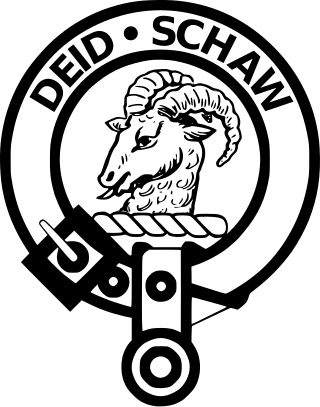
The Clan Ruthven is a Lowland Scottish clan.
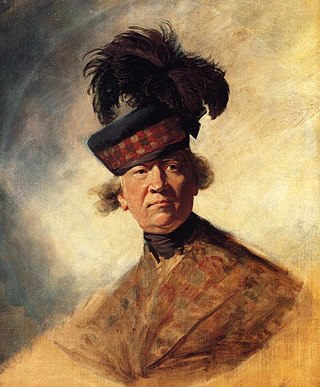
Archibald Montgomerie, 11th Earl of Eglinton was a Scottish General and Member of Parliament (MP) in the British Parliament. He was also the Clan Chief of the Clan Montgomery. Montgomerie fought in the Seven Years' War, where he served with George Washington. He also was the patron of the poet Robert Burns.
There have been three baronetcies created for members of the Anstruther family, two in the Baronetage of Nova Scotia and one in the Baronetage of Great Britain. Two of the creations are extant while one is extinct.

Sir John Anstruther, 4th Baronet and 1st Baronet PC was a Scottish politician.

Sir John Anstruther, 1st Baronet was a Scottish politician who sat in the Parliament of Scotland from 1702 to 1707, and in the British House of Commons from 1708 to 1741.

Sir John Anstruther, 2nd Baronet was a Scottish industrialist and politician.
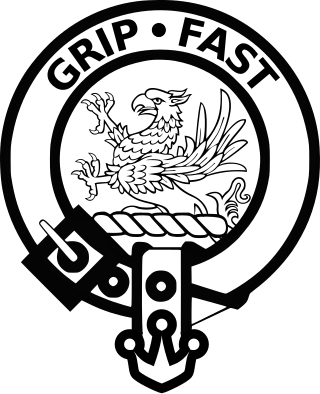
Clan Leslie is a Lowland Scottish clan. The progenitor of the Clan, Bartolf, was a nobleman from Hungary, who came to Scotland in 1067. He built a castle at Lesselyn, from which the clan name derives.
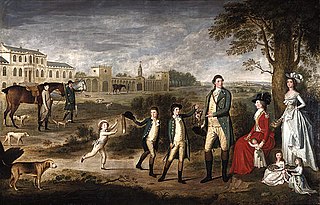
There have been five baronetcies of the United Kingdom created for a person with the surname Erskine, two in the Baronetage of Nova Scotia, one in the Baronetage of Great Britain and two in the Baronetage of the United Kingdom. Two of the creations are extant as of 2010.
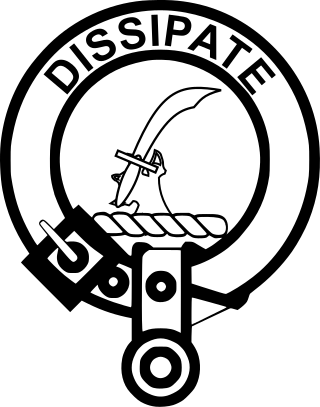
Clan Scrymgeour is a Highland Scottish clan.
Thomas Alexander Fraser, 12th Lord Lovat and 1st Baron Lovat, KT was a Scottish nobleman. He was the 21st Chief MacShimidh of the Clan Fraser of Lovat, succeeding the notorious Jacobite Simon Fraser, 11th Lord Lovat.
Clan Strange, also known as Clan Strang, is a Lowland Scottish clan.

Balcaskie is a 17th-century country house in Fife, Scotland. It lies around 2 km north of St Monans, and is notable chiefly as the home and early work of architect Sir William Bruce.
Sir Robert Anstruther, 1st Baronet, of Wrae, Linlithgow, and Balcaskie, Fife, was a Scottish politician who sat in the Parliament of Scotland between 1681 and 1707 and in the British House of Commons from 1709 to 1710.
Anstruther Wester in Fife was a royal burgh, created in 1587, that returned one commissioner to the Parliament of Scotland and to the Convention of Estates.
Before the Acts of Union 1707, the barons of the shire of Kinross elected commissioners to represent them in the unicameral Parliament of Scotland and in the Convention of the Estates.

Sir Philip Anstruther, 2nd Baronet of Balcaskie, Fife was a Scottish advocate and landowner.

Sir Robert Anstruther, 3rd Baronet of Balcaskie, Fife was a Scottish advocate and landowner.












